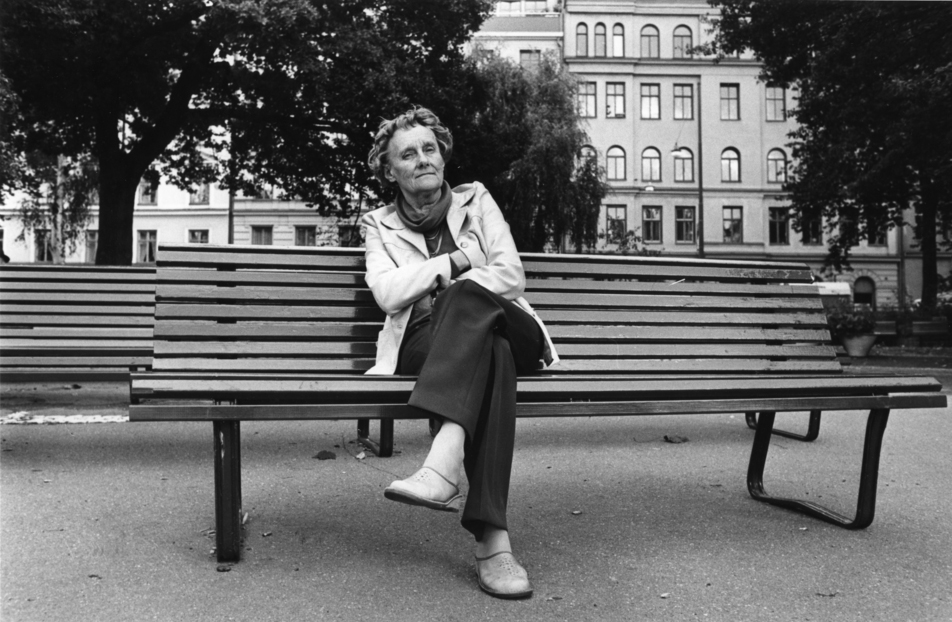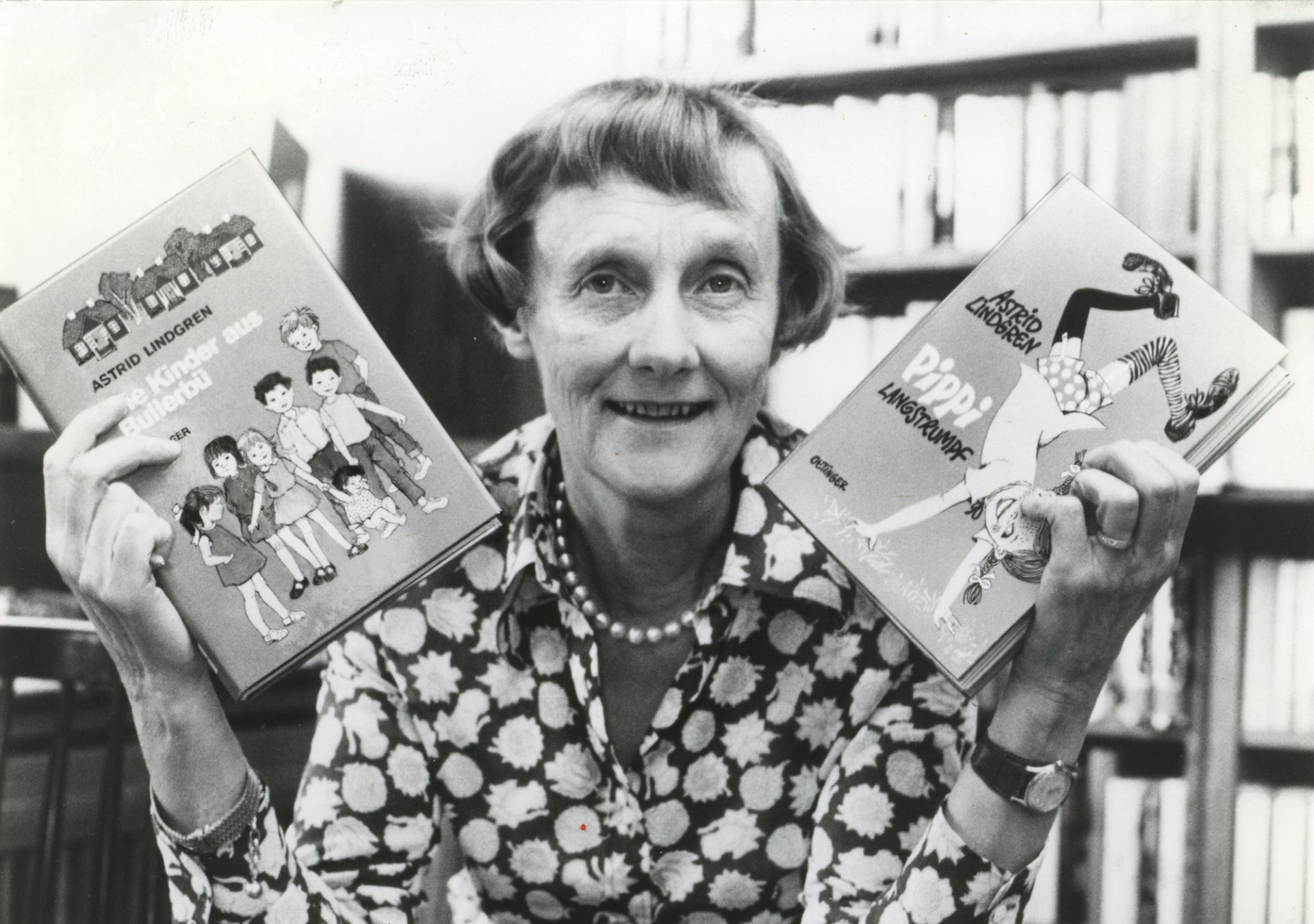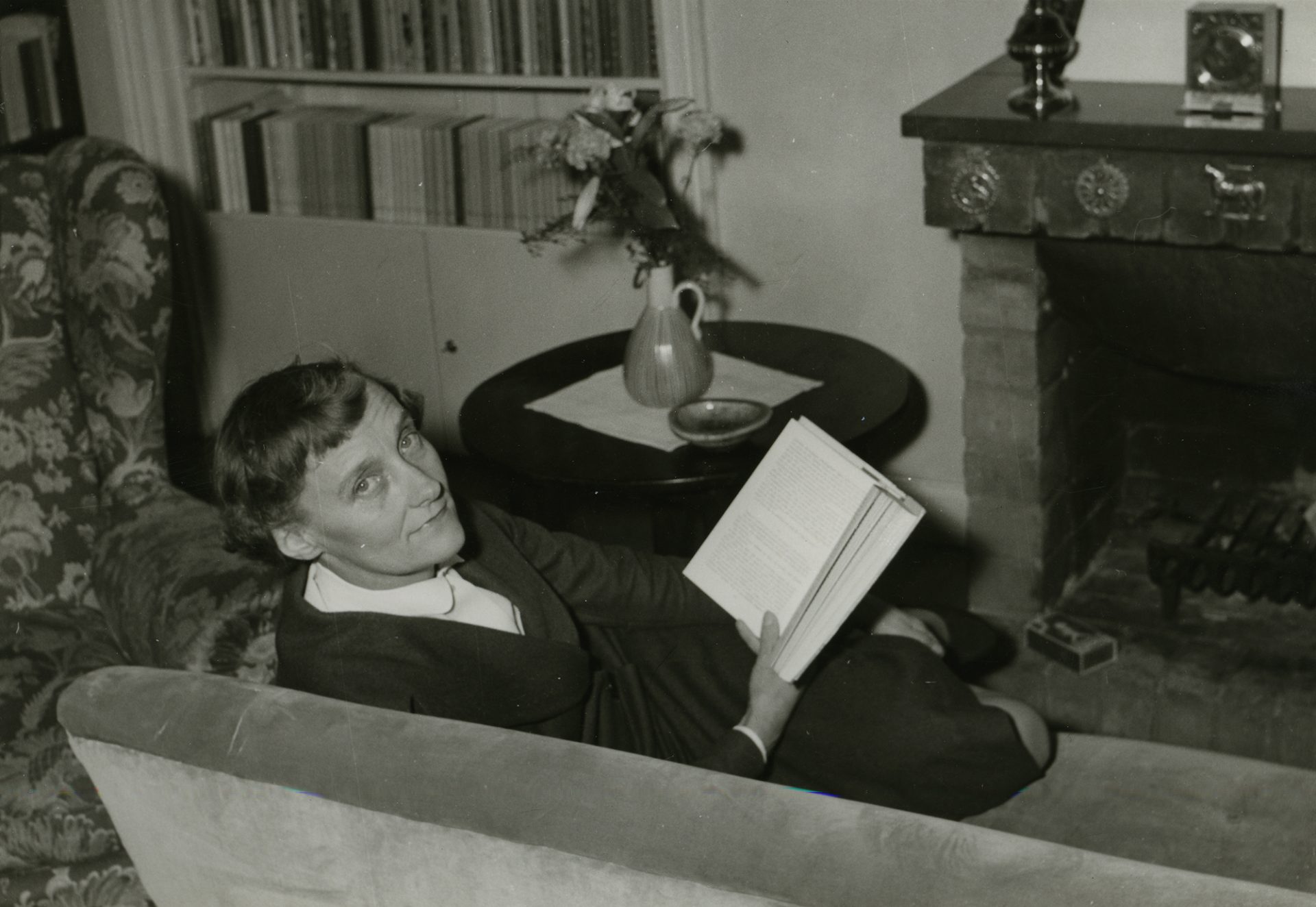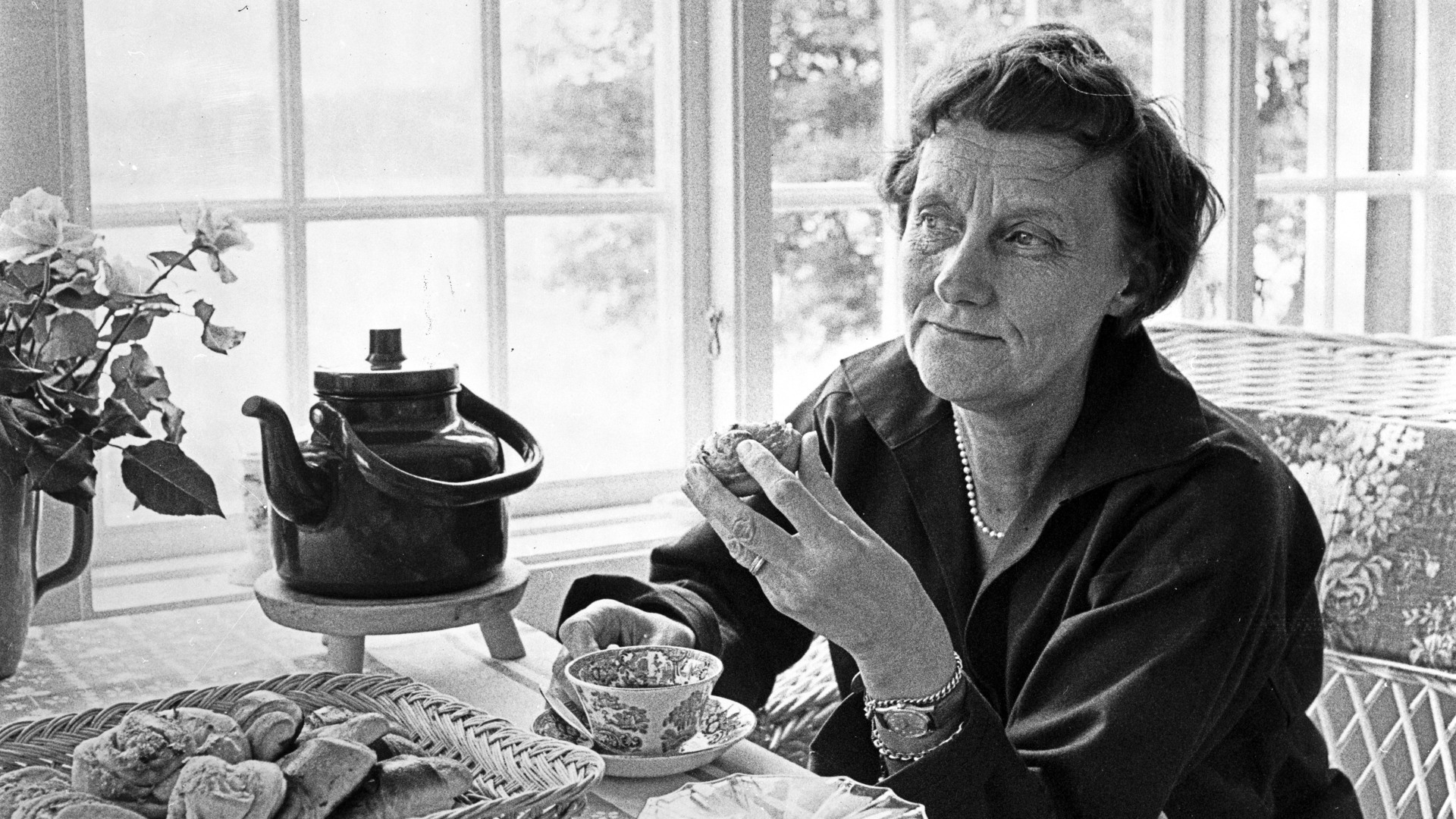
Astrid Lindgren and Junibacken
November 14 1907 – January 28 2002 – © Astrid Lindgren Aktiebolag
Life – a Wonderful Fairy Tale
Astrid Anna Emilia Lindgren was born on November 14, 1907, at the farm Näs in the small town of Vimmerby, in the province of Småland.
Her father was a farmer, and Astrid grew up with her older brother Gunnar and younger sisters Stina and Ingegerd. At that time, parents in the countryside rarely had time to play with their children. This meant that the children were given a great deal of freedom.
“Children need to be deeply loved – but slightly neglected” Astrid herself once said, thinking back on her own happy childhood.

From Vimmerby to Vasastan
The many years of play and freedom came to an abrupt end when, at the age of eighteen, Astrid became pregnant by the editor-in-chief of the local newspaper Vimmerby Tidning. He wanted to marry her, but she did not, and the scandal was unavoidable. To escape the gossip, she moved to Stockholm and trained to become a secretary. But being a single mother at that time was nearly impossible. There were no preschools and no childminders. When her son Lars was born, Astrid had no choice but to place him in a foster home in Denmark until she could get her life in order.
The move to Karlsson-on-the-roof’s neighborhood
At the age of 23, Astrid had found the man she wanted to marry. His name was Sture Lindgren, and he was her boss at the Royal Automobile Club. In the spring of 1931, Astrid Ericsson became Mrs. Astrid Lindgren and was finally able to bring her beloved Lasse home—by then, he was already four years old. The family moved into a small two-room apartment on Vulcanusgatan, near Vasaparken, in the very neighborhood where Karlsson-on-the-Roof would later live. Three years later, Astrid and Sture had a daughter, Karin, and Astrid stayed home as a full-time mother for many years.
A Debut at Age 37
Astrid didn’t make her debut as an author until the age of 37, when Lasse was 18 and Karin 10. The story behind her debut has become something of a tale in itself: Astrid loved telling stories to her children. She made up fairy tales and adventures, and her daughter always wanted to hear more. One day, when Karin was 7 years old and bedridden with pneumonia, she said to her mother: “Can you tell me a story about Pippi Longstocking?” And so it began. “A name that silly demanded a silly girl,” Astrid later said—and soon, the story was complete with a silly house and a silly horse.
Pippi gets rejected
Astrid sent a copy of Pippi Longstocking to the Bonniers publishing house, but they rejected it. They thought Pippi was just too outrageous. But Astrid had discovered how much fun writing could be. The next year, when the publisher Rabén & Sjögren announced a competition for the best young adult novel, she wrote a new book and entered it. Britt-Mari Opens Her Heart won second prize, and Astrid later said: “I don’t think I’ve ever been as happy as I was the night the publisher called!”
A book a year
The following year, 1945, the same publisher held a competition for children’s books. This time, Astrid submitted her Pippi Longstocking manuscript—and won first prize. From 1944 to 1974, Astrid Lindgren published at least one, often two, and sometimes even three books a year. She continued to write nearly every year until 1992, when she placed the final period at the age of 85.

Criticism and commitment
All over the world, Astrid Lindgren has been met with deep respect and admiration. She received countless awards and honors—not only for her writing, but also for her activism, such as her commitment to animal welfare. She fought for cows, hens, and pigs to be allowed to live outdoors in nature, just like they did when she was a child.
In her seventies, she also became a sharp and influential voice in public debate. Many remember her famous article published in Expressen in 1976 during the tax controversy: The Tale of Pomperipossa in Monismania.
So simple that a child can understand
Astrid’s stories show us that the distance between joy and sorrow is short—and that one cannot exist without the other. Her stories have an extraordinary ability to stay with us, even as adults. She addressed timeless human struggles that we all face, regardless of age: questions about life and death, about friendship and loneliness, about happiness and grief.
The secret to why she became a living legend may lie in something she wrote in her book about her parents:
“There is no shame in writing simply; it doesn’t have to be banal or poor because of that. Poets often speak to us about life and death and love—all the deepest aspects of being human—with words so simple that even a child can understand them. Have you ever thought about that?”
Thank you for everything Astrid!
Read more about Astrid Lindgren at astridlindgren.se and through the Astrid Lindgren Society.

“Children need to be deeply loved – but slightly neglected”
Astrid Lindgren © Astrid Lindgren Aktiebolag

